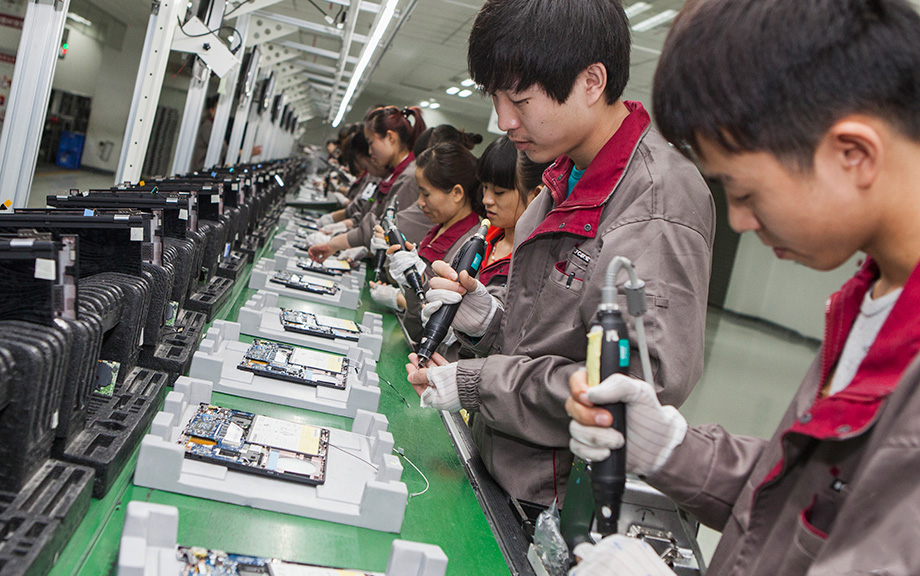U.S. Imports from China Have Fallen by Less Than U.S. Data Indicate

With new tariffs on China back in the headlines, this post seeks to offer some perspective on how much China’s exports have really been affected by multiple rounds of U.S. tariffs and export restrictions over the past seven years. The key takeaway is that U.S. imports from China have decreased by much less than has been reported in official U.S. statistics. As a result, the recent tariff increase on China could have a larger impact on the U.S. economy than is suggested by official U.S. data on the China import share, especially if favorable tariff treatment for direct-to-consumer imports is ended.
What Happened to the U.S. Deficit with China during the U.S.‑China Trade Conflict?

The United States’ trade deficit with China narrowed significantly following the imposition of additional tariffs on imports from China in multiple waves beginning in 2018—or at least it did based on U.S. trade data. Chinese data tell a much different story, with the bilateral deficit rising nearly to historical highs at the end of 2020. What’s going on here? We find that (as also discussed in a related note) much of the decline in the deficit recorded in U.S. data was driven by successful efforts to evade U.S. tariffs, with an estimated $10 billion loss in tariff revenues in 2020.
The Investment Cost of the U.S.‑China Trade War

Starting in early 2018, the U.S. government imposed tariffs on over $300 billion of U.S. imports from China, increasing the average tariff rate from 2.7 percent to 17.5 percent. Much of the escalation in tariffs occurred in the second and third quarters of 2019. In response, the Chinese government retaliated, increasing the average tariff applied on U.S. exports from 5.7 percent to 20.4 percent. Our new study finds that the trade war reduced U.S. investment growth by 0.3 percentage points by the end of 2019, and is expected to shave another 1.6 percentage points off of investment growth by the end of 2020. In this post, we review our study of the trade war’s effect on U.S. investment.
Who Pays the Tax on Imports from China?

Tariffs , of little interest for decades, are again becoming relevant given the increase in the levies charged on Chinese imports. U.S. businesses and consumers are shielded from higher tariffs to the extent that Chinese firms lower their dollar-denominated prices. However, data indicate that prices on goods from China are not falling. As a result, U.S. firms and consumers are paying the tax.
The Impact of Import Tariffs on U.S. Domestic Prices

The United States imposed new import tariffs on about $283 billion of U.S. imports in 2018, with rates ranging between 10 percent and 50 percent. In this post, we estimate the effect of these tariffs on the prices paid by U.S. producers and consumers. We find that the higher import tariffs had immediate impacts on U.S. domestic prices. Our results suggest that the aggregate consumer price index (CPI) is 0.3 percent higher than it would have been without the tariffs
Cryptocurrencies, Tariffs, “Too Big to Fail,” and Other Top LSE Posts of 2018

“Cryptocurrency” hit the cultural mainstream in 2018. In March, Merriam-Webster added “cryptocurrency” to the dictionary, and in what was perhaps a greater litmus test of pop culture recognition, “bitcoin” was added to the official Scrabble dictionary in September. With such a surge in interest, it’s not too surprising that the most viewed post on Liberty Street Economics this past year focused on an issue surrounding how digital currencies operate that is not often put in the spotlight—trust. Similarly, as the subject of tariffs has become a more frequent topic of discussion in the news, readers have sought additional info, which fueled interest in another of our most viewed posts of the year. As 2019 approaches, we offer a chance to revisit these posts and the rest of our top five of 2018.
Just Released: August Regional Survey—Businesses See Tariffs Raising Prices
This week, we released our August surveys of manufacturers and service firms. Our Supplemental Survey Report, released this morning, reveals how businesses view the effects of recent trade policy on their costs, prices, sales, and profits. The results suggest that recent tariffs are raising both input costs and selling prices for local businesses, and these effects appear to be more widespread for manufacturers than for service firms.
Do Import Tariffs Help Reduce Trade Deficits?

Import tariffs are on the rise in the United States, with a long list of new tariffs imposed in the last few months—25 percent on steel imports, 10 percent on aluminum, and 25 percent on $50 billion of goods from China—and possibly more to come on China and the auto industry. One of the objectives of these new tariffs is to reduce the U.S. trade deficit, which stood at $568.4 billion in 2017 (2.9 percent of GDP). The fact that the United States imports far more than it exports is viewed by some as unfair, so the idea is to try to reduce the amount that the nation imports from the rest of the world. While more costly imports are likely to reduce the quantity and value of imports into the United States, the story does not stop there, because we cannot presume that the value of exports will remain unchanged. In this post, we argue that U.S. exports will also fall, not only because of other countries’ retaliatory tariffs on U.S. exports, but also because the costs for U.S. firms producing goods for export will rise and make U.S. exports less competitive on the world market. The end result is likely to be lower imports and lower exports, with little improvement in the trade deficit.












 RSS Feed
RSS Feed Follow Liberty Street Economics
Follow Liberty Street Economics